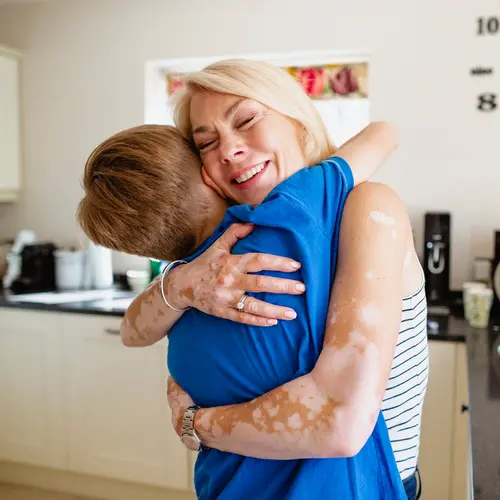Benign lichenoid keratosis — or lichen planus — is a noncancerous health condition that can affect your mucous membranes, hair, skin, and nails. Read on to discover what you need to know about symptoms, diagnosis, treatment, and risks.
Understanding Benign Lichenoid Keratosis
Benign lichenoid keratosis happens when your immune system attacks your cells for no obvious reason. It develops over time, causing swelling and irritation. Most cases are mild and respond well to home treatment. Medical attention is usually unnecessary.
Benign lichenoid keratosis looks unpleasant, but it isn’t contagious. It can appear anywhere on your skin. It’s most common in areas like your mouth, vagina, and other areas covered with skin.
Middle-aged people have the highest risk of getting benign lichenoid keratosis. Oral benign lichenoid keratosis also affects women most often.
The causes of benign lichenoid keratosis is unknown, but some events have been connected to its appearance:
- Infection of hepatitis C
- Flu vaccination
- Some dyes, chemicals, and metals
- Over-the-counter medications like ibuprofen (Motrin) or naproxen (Advil)
- Prescription medications used to treat heart disease, high blood pressure, or arthritis
Benign Lichenoid Keratosis Symptoms
Benign lichenoid keratosis looks like other well-known skin irritations and rashes at first. Over time, its symptoms become easier to distinguish and may include:
- Flat, purple bumps that itch
- Slow-growing blisters that create sores and scabs when they burst
- White, lacy patches of skin in and around your mouth
- Painful sores
- Hair loss where the sores appear
- Changes in the color of your scalp
- Nail damage or complete loss of your nails
Diagnosing Benign Lichenoid Keratosis
Because benign lichenoid keratosis looks like many other conditions, it’s misdiagnosed up to 70% of the time. It is most often confused with basal cell carcinoma — a common skin cancer.
Benign lichenoid keratosis on your genitals can also be mistaken for a sexually transmitted disease — or STD.
Though basal cell carcinoma is usually more pink than purple, it can have an appearance similar to that of benign lichenoid keratosis. To differentiate between the two and offer a specific diagnosis, your doctor may take a small sample of your skin and send it for a biopsy.
Treating Benign Lichenoid Keratosis
Treating benign lichenoid keratosis at home. You can relieve the symptoms of benign lichenoid keratosis with over-the-counter medications and creams. If these don’t help, talk to your doctor as you may need a prescription.
Treating benign lichenoid keratosis at the doctor’s office. If over-the-counter treatment of benign lichenoid keratosis doesn’t work, it’s time to see your doctor. Your doctor will ask you to get some tests done so that they can decide if the rash you have is because of benign lichenoid keratosis.
If you don’t have specific symptoms, your doctor may let it heal on its own. Untreated benign lichenoid keratosis usually clears up within two years.
If you have open sores that are itchy or painful, your doctor will prescribe you oral medications and creams.
These prescribed treatments also help prevent further damage to your body and include:
- Antihistamine cream — for itching
- Oral or cream steroids — for inflammation
- PUVA or photochemotherapy — a treatment that uses ultraviolet light to treat the sores
- Retinoic acid — a medication derived from vitamin A and commonly used to treat acne
- Tacrolimus and pimecrolimus — which are creams used to treat eczema
Benign Lichenoid Keratosis Risks
Benign lichenoid keratosis carries a risk of permanent damage in rare cases. Sores in your mouth can make eating and drinking painful, as well as increasing your risk for oral cancer. Sores on your vagina can affect the quality of your sex life. Severe lesions on your skin can leave the affected areas darker or scarred. Sores inside your ear can cause permanent hearing loss.

